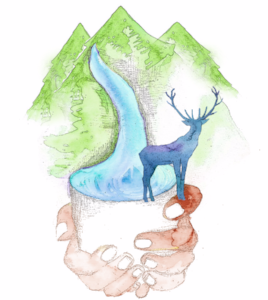Total Mindsuckers
As I listened to Anand Varma, National Geographic Photographer, present on the weird and bizarre parasites of the world, I was astonished. Through his unique images, Anand offers a rare glimpse at our world’s smallest wonders. These creatures are total mindsuckers.
Ladybug Turns Into a Zombie
The wasp, Dinocampus coccinellae, is about the size of an ice-cream sprinkle. When a female wasp is ready to lay an egg she finds a ladybug and inserts her stinger into its underside. By doing so, the female wasp injects an egg into her victim along with a blend of chemicals. When the egg hatches, the larva feeds on the fluids that fill the host’s body and grows on the resulting nutrients. The ladybug is gradually being devoured and the wasp larva wraps itself in a silk cocoon beneath it leaving the ladybug immobile. In effect, the ladybug has become the parasite’s bodyguard and it will play this role for a week until the adult wasp cuts a hole through the cocoon, flies away and kills the lady bug.
Jewel Wasp’s Neurosurgery
The emerald cockroach wasp or jewel wasp, Ampluex compressa, is known for its unusual reproductive behavior. The wasp’s venom is made up of a variety of different chemicals and one of the chemicals affects the behavior of their victim, the cockroach. When the wasp is ready to lay its eggs, it stings precisely into a specific area of the cockroach’s brain that paralyzes the front legs of the roach. The wasp then proceeds to chew off the half of each of the roach’s antenna, and leads the roach to its burrow where it lays its eggs in the roach’s abdomen. The hatched larva lives and feeds for 4-5 days on the roach and over a period of eight days, the wasps larva consumes the roach’s internal organs.
Six Legged Frog
A flatworm called Ribeiroia, starts out life in a snail. It grows and reproduces inside the snail where it produces a new generation of flatworms that can escape the snail in search of a vertebrate host. The flatworm typically invades tadpoles by burying themselves in the tiny buds. As the frogs develop their legs, the parasites wreak havoc by stunting the growth of a leg, developing leg forks in two or even sprouting a dozen legs. These infected frogs though are only part of the parasites strategy to advance its life cycle. The parasite cannot reproduce in frogs, so instead they wait to get into a bird where they take up residence in the gut and produce eggs that are their host. The parasites eggs re-enter the water when the bird defecates, infecting new snails and beginning the life-cycle again.



